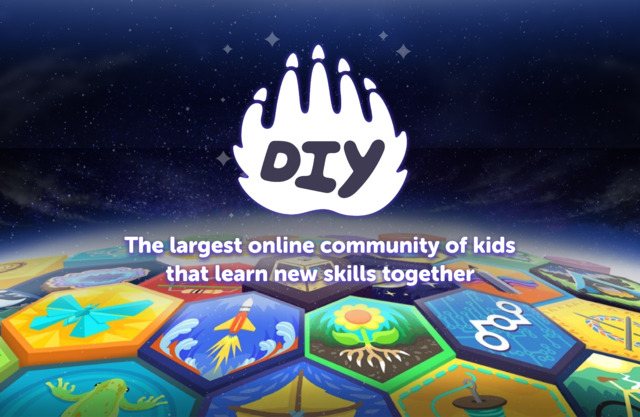
According to a recent University of Michigan study, nearly one-third of parents from households earning less than $60,000 a year say their child is less involved with school activities because of cost. But affordable extracurricular programs are now just a click away, thanks to two prominent tech veterans.
DIY.org, is a new learning platform for kids between 5 and 16. Co-founder and CEO Bhavik Rathod, a former Ernst & Young financial executive, was a founding leader of Uber in India, as well as the founder of EmployeeSocial. Previous to starting DIY, co-founder and COO Tripti Ahuja co-founded 400 Things, and was a founding leader at Rizort, a marketplace for luxury resorts around the world.
The conviction that DIY could really change the lives of kids worldwide hit home at the 2014 Uber Leadership Summit, where Bhavik rubbed elbows with entrepreneur-celebrities like Ashton Kutcher and Arianna Huffington. “It truly felt as if there were no limits to what could be achieved there and it really inspired me to take that really big next step,” he remembers. “When I got home, I realized that kids in their formative years are most easily able to think outside the box. I thought, ‘why not provide them with spaces that enable them to explore anything that might pique their interests along with the right guidance to pick up real-life skills?’”
One of the first goals was making kids’ screen time a positive experience — in part by taking them offline more frequently. From the start, all of the platform’s content was embedded with an action element. For example, each course and show features inspired challenges that instruct the viewer to get off their screen and go build projects based on whatever they have learned. The result is that for every 10 minutes spent on DIY, kids spend 30 minutes offline thinking, planning, and creating.
“Watching children learn, create, and share — all while inspiring other kids to develop their skills — has become the most enriching experience on the platform,” says Bhavik. “The platform is already bringing joy to thousands of kids and parents across the world while promoting positive and good screen time.” Those thousands of kids include the couple’s own daughter, who uses the platform to learn yoga, film herself performing Disney musicals, do science experiments, and make new friends.
Although DIY.org is cloud-based, Tripti says that the average DIY user spends nearly eight hours a day offline doing activities and projects to share back to the platform. Those projects can range from software coding and creative writing to social activism and fashion design. When a kid finishes a project, they upload a video of themselves and their work to share with the community. “We are now the largest library of kids activities on the Internet,” Bhavik says.
Indeed, DIY.org has already amassed over 500 hours of free videos across more than 150 skills to inspire learning. Though much of the platform is based on “kids inspiring kids,” there are also live workshops conducted by mentors across the globe. And because the site is monitored 24/7, parents can rest assured that it is a safe space for kids to play anytime, anywhere. According to its creators, that is no accident.
“With Covid, we once again learned the importance of involving kids in education and social activities outside the classroom,” observes Tripti. “Especially when schools are closed, kids need an interactive and individualized platform to further their creative development, as well as entertain themselves while their parents work.”
During the pandemic, reading and math scores among 9-year-old Americans declined at a historic and troubling rate, according to experts. There has also been a disturbing increase in mental illness among kids, some of whom have now spent years without interacting socially at school. Many — if not most — young Americans turn to social media apps like TikTok and Instagram when boredom sets in. But Tripti and Bhavik say that these platforms don’t allow children to explore individual interests or build the confidence and problem-solving skills they will need to advance later in life.
“Wealthier parents have been able to hire tutors to conduct small classes at home, but this is simply not an option for most families, Tripti says. “That was another big inspiration for DIY.org. We wanted to be the first platform to give kids an affordable and safe place to explore.”
However, Bhavik says this doesn’t mean the platform cannot be social too. “We are on a mission to connect kids who share interests,” he adds, “because we know that creativity is contagious.”
Original Source of the original story >> DIY: Affordable Extracurricular Programs for Kids






